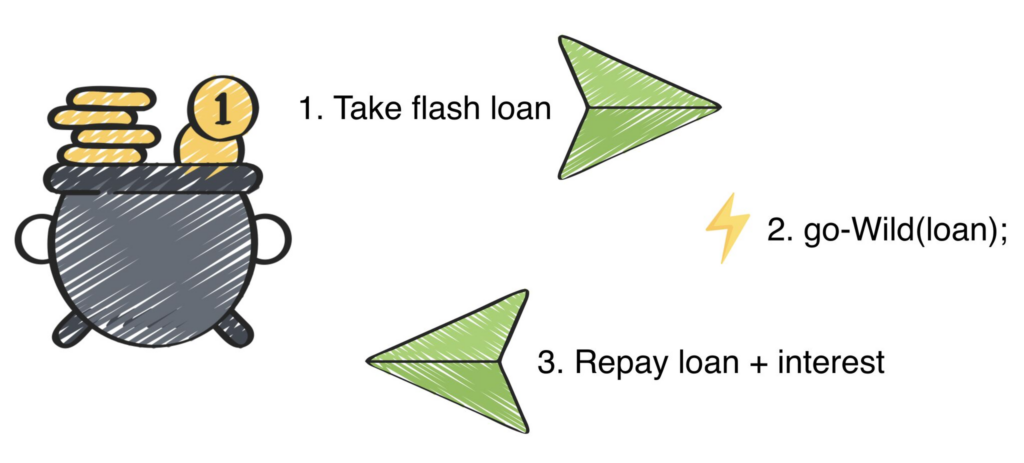Flash loans have become a well-established concept in the decentralized finance (DeFi) ecosystem, despite their seemingly counterintuitive nature. They revolutionize traditional lending by enabling substantial borrowing without any upfront collateral, provided the loan, along with a small fee, is repaid within the same transaction block.

The power of flash loans
The core strength of flash loans lies in their ability to provide immense liquidity for a very short period. This liquidity can transform anyone into a heavily capitalized player for the duration of a single transaction. The applications of flash loans are vast and varied:
- Arbitrage: Exploit price differences across different platforms to make a profit.
- Liquidations: Assist in clearing under-collateralized positions.
- Collateral Swaps: Seamlessly change collateral on leveraged positions.
- Leveraged Trading: Create or modify leveraged positions efficiently.
However, with great power comes great responsibility. The speed and potency of flash loans can also be harnessed for malicious purposes, such as exploiting protocol vulnerabilities. This makes it imperative for DeFi developers to focus on creating robust and secure financial ecosystems.
Example: Aave V3
Consider Aave V3, a popular DeFi protocol. Here, users can borrow assets like 1000 ETH for one transaction block, with a nominal base fee of 0.05% (subject to change by governance vote). This means the cost for such a loan would only be 0.5 ETH. While this is highly attractive for arbitrageurs and traders, it is crucial to remember that flash loans can turn anyone into a very well-capitalized actor, thereby opening up completely new potential attack vectors.
The risks and responsibilities
The rapid and substantial liquidity provided by flash loans can be a double-edged sword. On one hand, they enable innovative financial strategies and enhance market efficiency. On the other hand, they can be used to exploit vulnerabilities in DeFi protocols. Some of the risks associated with flash loans include:
- Protocol Exploits: Attackers can use flash loans to exploit vulnerabilities in smart contracts.
- Market Manipulation: The ability to borrow large sums instantly can be used to manipulate markets.
- Systemic Risks: The interconnected nature of DeFi protocols means that a successful attack on one protocol can have cascading effects on others.
Looking forward
As we continue to navigate and innovate within the DeFi space, understanding and leveraging the benefits of flash loans while mitigating their risks is crucial. The next step involves diving into the specifics of flash loan attacks and developing strategies to defend against them.
Conclusion
Flash loans represent a powerful tool in the DeFi arsenal, offering immense potential for both legitimate financial strategies and malicious exploits. As the DeFi ecosystem evolves, it is essential for developers and users alike to stay informed and vigilant. By doing so, we can harness the benefits of flash loans while safeguarding against their risks.




